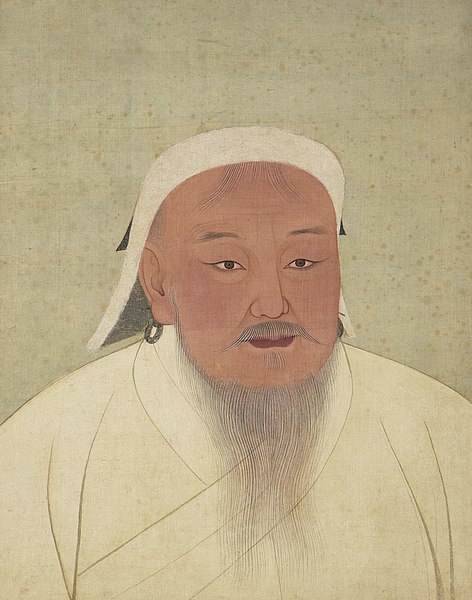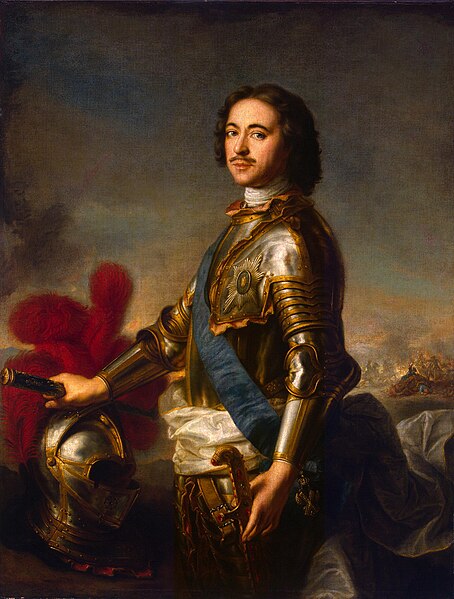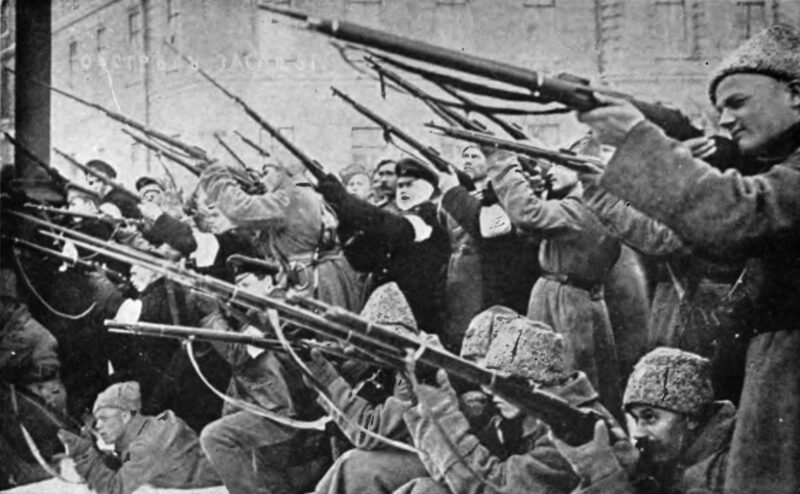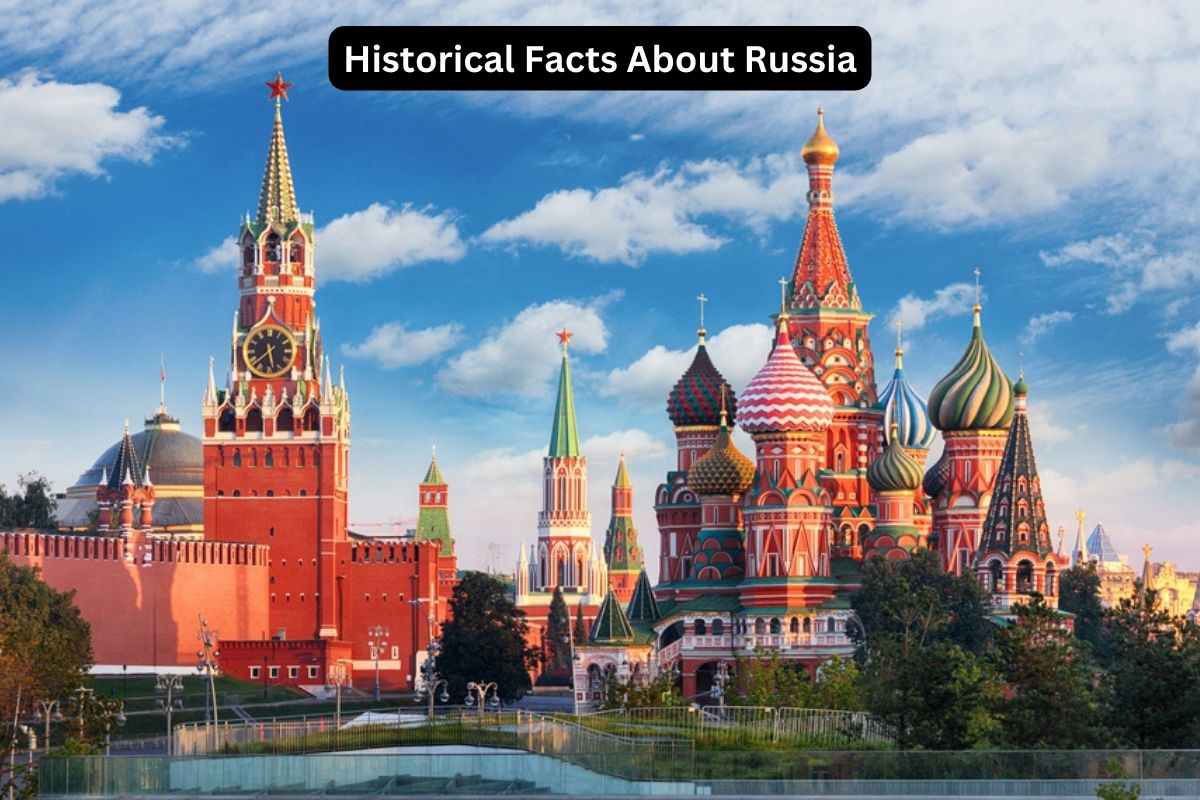Exploring the intricate tapestry of Russia’s history unveils a saga of conquests, revolutions, and cultural milestones that have shaped the nation’s identity.
From the legendary origins of Kievan Rus’ to the tumultuous events of the 20th century, Russia’s story is one of resilience, transformation, and enduring influence.
In this article, we delve into some of the pivotal moments in Russian history, spanning from the early medieval period to the modern era, illuminating the key events and personalities that have left an indelible mark on the Russian landscape.
Facts About the History of Russia
1. Formation of Kievan Rus’ in the 9th century
The history of Russia begins with the establishment of Kievan Rus’, which emerged in the 9th century as a federation of East Slavic tribes. Rurik, a Varangian chieftain, is traditionally credited with founding the first ruling dynasty in Novgorod around 862 AD.
Also Read: Timeline of Russian History
The federation’s center shifted to Kiev under rulers like Oleg and Igor, culminating in the reign of Vladimir the Great, who converted to Orthodox Christianity in 988, thus establishing Christianity as the state religion.
Kievan Rus’ was a significant political and cultural force in Eastern Europe and laid the foundations for the Russian state.
2. Mongol invasion and rule in the 13th century
In the early 13th century, the Mongol Empire, led by Genghis Khan and later his descendants, invaded and conquered vast territories, including parts of modern-day Russia. The invasion culminated in the Mongol capture of Kiev in 1240.

This marked the beginning of the Mongol Yoke, a period of over two centuries of Mongol rule over the Russian principalities.
The Mongols, or Tatars as they were known in Russian chronicles, established the Golden Horde, which controlled much of the region, exacting tribute and imposing their authority over the Russian princes.
Also Read: Facts About Russia’s Government
The Mongol domination profoundly influenced Russian culture, politics, and society, shaping the centralized autocratic system that would characterize Russia for centuries.
3. Reign of Ivan the Terrible in the 16th century
Ivan IV, also known as Ivan the Terrible, was the first ruler to be crowned Tsar of All Russia in 1547. His reign, which lasted until his death in 1584, was marked by both significant achievements and brutal repression.
Ivan centralized power in the hands of the Tsar, creating the foundations of the Russian autocracy. He expanded the Russian state through military conquests, including the annexation of the Khanate of Kazan and the Khanate of Astrakhan, thereby extending Russian control into Siberia.
However, Ivan’s rule was also characterized by his erratic behavior and extreme cruelty, earning him the epithet “the Terrible.”
His reign saw the establishment of the Oprichnina, a state within a state marked by political purges and terror. Despite his achievements, Ivan’s legacy is complex, leaving a lasting impact on Russian history and memory.
4. Time of Troubles in the early 17th century
The Time of Troubles was a period of political crisis and turmoil in Russia that followed the death of Tsar Ivan IV (Ivan the Terrible)’s last descendant in 1598. The lack of a clear successor to the throne plunged Russia into chaos, marked by famine, foreign invasion, and internal strife.
The crisis was exacerbated by social unrest, economic instability, and the intervention of rival factions vying for power. It culminated in the Polish-Muscovite War (also known as the Dimitriads) and the intervention of the Polish-Lithuanian Commonwealth, which occupied Moscow in 1610.
The Time of Troubles ended with the election of Michael Romanov as the new Tsar in 1613, establishing the Romanov dynasty that would rule Russia for over three centuries.

5. Rule of Peter the Great, focusing on westernization, in the late 17th and early 18th centuries
Peter I, also known as Peter the Great, ascended to the throne in 1682 and ruled until his death in 1725. He is renowned for his efforts to modernize Russia and transform it into a European power. Inspired by his travels in Western Europe, Peter implemented sweeping reforms aimed at modernizing the military, government, economy, and culture.
He initiated the construction of St. Petersburg as a new capital and a window to the West, symbolizing his aspiration to bring Russia closer to European standards. Peter implemented a range of reforms, including the Table of Ranks to reform the bureaucracy, the introduction of new industries, and the establishment of the first Russian navy.
Despite facing opposition and resistance to his reforms, Peter’s reign laid the foundations for Russia’s transformation into a major European power.
6. Expansion of the Russian Empire under the Romanov dynasty
Under the Romanov dynasty, Russia underwent significant territorial expansion, becoming one of the largest empires in history. The reigns of Peter the Great, Catherine the Great, and other tsars saw the acquisition of vast territories in Eastern Europe, Siberia, Central Asia, and North America.
Russia’s expansionist policies were driven by strategic, economic, and ideological motives, including the desire to gain access to warm-water ports, control trade routes, and spread Russian influence and Orthodox Christianity.
The conquest of Siberia, the annexation of Crimea and the Caucasus, and the colonization of Alaska were among the key territorial acquisitions during this period. The Russian Empire’s multi-ethnic and multi-religious composition posed challenges to governance, contributing to tensions and conflicts within the empire.

7. Decembrist Revolt in 1825
The Decembrist Revolt was a significant event in Russian history, occurring on December 26, 1825. It was a revolt led by a group of Russian army officers who were inspired by liberal and nationalist ideas circulating in Europe at the time.
The Decembrists, as they were called, sought to oppose the autocratic rule of Tsar Nicholas I and to advocate for political reforms, including the establishment of a constitutional monarchy and the abolition of serfdom.
The revolt was quickly suppressed by loyalist forces, and its leaders were arrested and subsequently punished, many with exile to Siberia or execution.
While the Decembrist Revolt failed to achieve its immediate goals, it left a lasting impact on Russian society by highlighting the growing discontent with autocratic rule and inspiring later revolutionary movements.
8. Abolition of serfdom in 1861
The abolition of serfdom in Russia in 1861 was a landmark event that fundamentally transformed Russian society and economy. Serfdom, a system in which peasants were bound to the land and subject to the control of noble landowners, had been a defining feature of Russian feudalism for centuries.
The emancipation of the serfs was initiated by Tsar Alexander II as part of a series of reforms aimed at modernizing Russia and alleviating social tensions.
The Emancipation Manifesto, issued on February 19, 1861, granted the serfs personal freedom and the right to own property, but they were required to pay redemption dues to their former landlords for land allotted to them.
While the abolition of serfdom represented a significant step towards social justice, the transition to freedom was often difficult for the peasants, as many remained economically dependent on their former landlords or were burdened by heavy debts.

9. Russian Revolution in 1917, leading to the Bolsheviks seizing power
The Russian Revolution of 1917 was a pair of revolutions that took place in Russia, leading to the overthrow of the centuries-old Romanov dynasty and the establishment of the world’s first communist state.
The February Revolution, which began on March 8 (February 23 on the Julian calendar), 1917, resulted in the abdication of Tsar Nicholas II and the formation of a provisional government. However, dissatisfaction with the provisional government’s policies, combined with the growing influence of radical socialist groups such as the Bolsheviks, led to the October Revolution.
On October 25 (November 7), 1917, Bolshevik forces, led by Vladimir Lenin, seized key government buildings in Petrograd (formerly St. Petersburg) and overthrew the provisional government.
The Bolsheviks then established a socialist government based on Marxist principles, marking the beginning of the Russian Soviet Federative Socialist Republic (RSFSR) and eventually the formation of the Soviet Union.
10. Collapse of the Soviet Union in 1991, leading to the formation of the Russian Federation
The collapse of the Soviet Union in 1991 marked the end of the Cold War and the dissolution of the world’s largest communist state. Economic stagnation, political repression, and growing nationalist movements within the Soviet republics contributed to the unraveling of the Soviet system.
The process began with the policies of glasnost (openness) and perestroika (restructuring) implemented by Soviet leader Mikhail Gorbachev in the late 1980s, which inadvertently loosened the grip of communist control and fueled demands for greater autonomy and independence among the Soviet republics.
On December 26, 1991, the leaders of Russia, Ukraine, and Belarus signed the Belavezha Accords, declaring the dissolution of the Soviet Union and establishing the Commonwealth of Independent States (CIS) as a loose association of independent states.
The collapse of the Soviet Union had profound consequences for Russia and the world, ushering in a new era of geopolitics and leaving a legacy of economic, social, and political challenges for the newly independent states.
